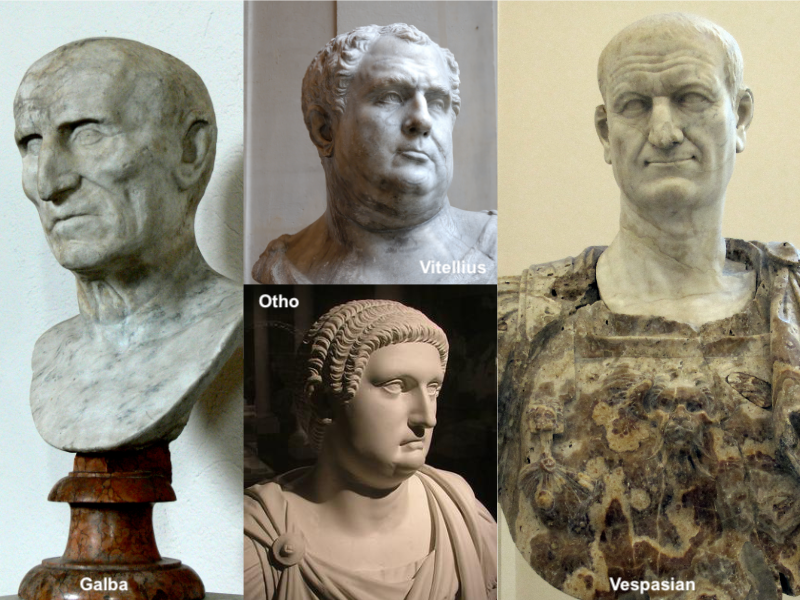The Year of the Four Emperors and the Stability of Vespasian
Episode #7 of the course The mad world of the Roman emperors by James Wareing
Today, we shall learn about the chaos that ensued after the reign of Nero. The lack of a natural heir to Nero signalled the end of the Julio-Claudian dynasty that began with Augustus and sparked a year of turmoil that included four emperors claiming their right to rule Rome.
Upon Nero being declared an enemy of the senate and his subsequent taking flight and suicide, Galba, then a governor in Spain, declared himself to be the rightful emperor. Otho and Vitellius were two prominent supporters of Galba, and both wanted to become the heir of the already 70-year-old emperor. However, when Galba appointed Lucius Calpurnius Piso to be his heir, Otho professed himself to be emperor and Galba was assassinated.
Vitellius: A Man Resembling All the Worst Parts of the Roman Elite
Vitellius, who had garnered a great deal of support from the army and many troops of Galba, declared himself emperor two months later. In a battle at Bedriacum, the two claiming the right to be emperor met in a decisive battle that Vitellius won, driving Otho to commit suicide. Vitellius was, by all accounts, a foul character. He had grown up on Carpi, where Tiberius had resided, amidst all the sexual promiscuities of the emperor. Cassius Dio describes him as “addicted to luxury and licentiousness,” and he banqueted sometimes as often as four times per day, vomiting to clear room for more food. Suetonius said that he would kill someone for “the smallest of reasons” and was particularly fond of torture.
However, his reign of self-indulgence and extravagance was short-lived. With the lack of familial ties to the right to be emperor, the power of the armies was once more revealed when Vespasian, three months into Vitellius’s reign, gathered his army to fight Vitellius for the right to be emperor. Vitellius was captured by Vespasian’s army, who tortured and killed him before finally chucking him into the river Tiber.
Vespasian Brings Stability to Rome
The appointing of Vespasian as emperor brought an end to the bloodshed and turmoil that had wracked Rome for a year. He established the Flavian dynasty that brought back order to Rome and a dynastic line that would ease the problems of succession that had blighted the previous year. Vespasian ruled for ten years and was largely very successful. He recovered Jerusalem and Judea, which were lost after the Jewish Revolt during the reign of Nero. He also helped reduce the debts of Rome incurred by the lavish spending tendencies of Nero, finding extra sources of income wherever he could. What he is most remembered for is the construction of the Flavian Amphitheatre, built next to the Colossus of Nero (a giant statue of the emperor). It is from the proximity to this statue that the amphitheatre acquired the name by which is it more commonly known today, the Colosseum. Vespasian did not have the vices and excesses of the previous emperors and ensured a harmonious succession upon his death from illness in AD 79 with his son, Titus, whom he had been readying throughout his reign to take over.
In tomorrow’s lesson, we shall learn about Titus and whether he could continue the semblance of calm and stability that his father had initiated in Rome.
Learn Something New Every Day
Get smarter with 10-day courses delivered in easy-to-digest emails every morning. Join over 400,000 lifelong learners today!
Recommended book
The Twelve Caesars by Suetonius
Share with friends

